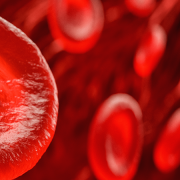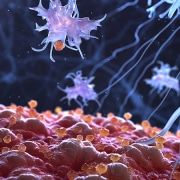Genomics and antimicrobial resistance
Already put to use in the worldwide search for new antimicrobial agents, genomics can also contribute to better targeted treatment
Alexander Fleming recognised the danger of antibiotic resistance shortly after his discovery of penicillin, saying in his 1945 Nobel Lecture:
“There is the danger that the ignorant man may easily underdose himself and by exposing his microbes to non-lethal quantities of the drug make them resistant.”
The World Health Organisation considers antibiotic resistance one of the most serious threats to global health. A report released last month by the European Centre for Disease Prevention and Control (ECDC) and the European Food Safety Authority (EFSA) led the EU commissioner for health and food safety to comment: “We are entering into a world where more and more common infections become difficult – or even sometimes impossible – to treat.”
Making better use of what we have
There are two main ways to combat antibiotic resistance – developing new antibiotics and using the ones we already have more effectively – and it makes sense to do both.
Genomics is already at the forefront of the race to develop new antimicrobials, but stewardship – making the best use of current antibiotics to minimise the spread of resistance – is equally important and is already part of UK guidelines on antibiotic use. Tactics include not prescribing antibiotics unnecessarily, emphasising the importance of finishing the course, and reserving certain drugs as ‘antibiotics of last resort’ for use in infections that don’t respond to first-line treatments. It also includes measures outside the medical sphere such as moving away from routine antibiotic use in livestock and encouraging hygiene practices, such as hand-washing, to reduce the spread of infections.
Genomics and stewardship?
Already valued in the search for new antimicrobial agents that may enable the development of new drugs, genomics also has great potential in terms of targeted prescribing.
A newly developed genomic test can tell if bacteria sampled from a patient are resistant to two common antibiotics – while the patient waits.
This test – developed at the American University in Washington DC, and reported in BMC Infectious Diseases – detects Macrolide efflux gene A (mefA), which can confer resistance to the antibiotics erythromycin and azithromycin.
“The test is able to detect the gene within ten minutes of assay run-time,” said co-author John Bracht. “Standard antibiotic testing requires at least an overnight culture and often isn’t performed in routine diagnostic work. Instead, physicians guess which antibiotic to prescribe based on past experience and recommendations, and patients have to return if the treatment fails.”
The potential advantages of these kind of genomic tests are numerous. Access to quick, easy and cheap tests could help doctors prescribe the right antibiotic first time, meaning the patient recovers faster and avoiding wasted medicines and unnecessary follow-up appointments. There could also be advantages in terms of stewardship: fewer unsuccessful courses of antibiotics reduces opportunities for resistance to develop. In addition, the data generated from such test results – if widely implemented – could be enormously useful in tracking the prevalence and spread of resistant strains of pathogens.
–









